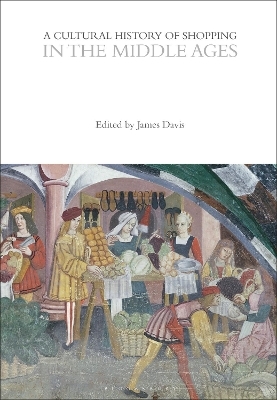
A Cultural History of Shopping in the Middle Ages
Seiten
2024
Bloomsbury Academic (Verlag)
978-1-350-02697-1 (ISBN)
Bloomsbury Academic (Verlag)
978-1-350-02697-1 (ISBN)
Covering the period from 500 BCE to 1450 CE, this is a systematic history of shoppers and shopping.
A Cultural History of Shopping was a Library Journal Best in Reference selection for 2022.
Throughout Europe, the collapse of Roman authority from the 5th century fractured existing networks of commerce and trade including shopping. The infrastructure of trade was slowly rebuilt over the centuries that followed with the growth of beach markets, emporia, seasonal fairs and periodic markets until, in the late Middle Ages, the permanent shop re-emerged as an established part of market spaces, both in towns and larger urban centers. Medieval society was a 'display culture' and by the 14th century there was a marked increase in the consumption of manufactures and imported goods among the lower classes as well as the elite. This volume surveys our understanding of medieval retail markets, shops and shopping from a range of perspectives - spatial, material culture, literary, archaeological and economic.
A Cultural History of Shopping in the Middle Ages presents an overview of the period with themes addressing practices and processes; spaces and places; shoppers and identities; luxury and everyday; home and family; visual and literary representations; reputation, trust and credit; and governance, regulation and the state.
A Cultural History of Shopping was a Library Journal Best in Reference selection for 2022.
Throughout Europe, the collapse of Roman authority from the 5th century fractured existing networks of commerce and trade including shopping. The infrastructure of trade was slowly rebuilt over the centuries that followed with the growth of beach markets, emporia, seasonal fairs and periodic markets until, in the late Middle Ages, the permanent shop re-emerged as an established part of market spaces, both in towns and larger urban centers. Medieval society was a 'display culture' and by the 14th century there was a marked increase in the consumption of manufactures and imported goods among the lower classes as well as the elite. This volume surveys our understanding of medieval retail markets, shops and shopping from a range of perspectives - spatial, material culture, literary, archaeological and economic.
A Cultural History of Shopping in the Middle Ages presents an overview of the period with themes addressing practices and processes; spaces and places; shoppers and identities; luxury and everyday; home and family; visual and literary representations; reputation, trust and credit; and governance, regulation and the state.
James Davis is Reader in History, Queen's University Belfast, UK.
List of Illustrations
Notes on Contributors
Series Preface, Jon Stobart
Introduction, James Davis and Richard Britnell
1. Practices and Processes, James Davis
2. Spaces and Places, Mark Page
3. Shoppers and Identities, Kate Kelsey Staples
4. Luxury and Everyday, Ben Jervis
5. Home and Family, James Davis
6. Visual and Literary Representations, Craig E. Bertolet
7. Reputation, Trust and Credit, Catherine Casson
8. Governance, Regulation and the State, Jessica Dijkman
Bibliography
Index
| Erscheinungsdatum | 23.05.2022 |
|---|---|
| Reihe/Serie | The Cultural Histories Series |
| Mitarbeit |
Herausgeber (Serie): Professor Jon Stobart |
| Zusatzinfo | 43 bw illus |
| Verlagsort | London |
| Sprache | englisch |
| Maße | 169 x 244 mm |
| Themenwelt | Wirtschaft ► Volkswirtschaftslehre ► Mikroökonomie |
| ISBN-10 | 1-350-02697-2 / 1350026972 |
| ISBN-13 | 978-1-350-02697-1 / 9781350026971 |
| Zustand | Neuware |
| Haben Sie eine Frage zum Produkt? |
Mehr entdecken
aus dem Bereich
aus dem Bereich
Wirtschaftszusammenhänge verstehen und mitreden können
Buch | Softcover (2023)
Wiley-VCH (Verlag)
19,99 €
die psychologischen Determinanten menschlicher Entscheidungen
Buch | Softcover (2024)
Kohlhammer (Verlag)
39,00 €


